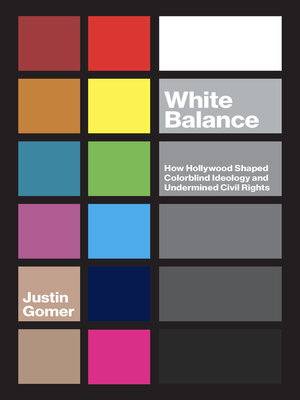White Balance
ebook ∣ How Hollywood Shaped Colorblind Ideology and Undermined Civil Rights · Studies in United States Culture
By Justin Gomer

Sign up to save your library
With an OverDrive account, you can save your favorite libraries for at-a-glance information about availability. Find out more about OverDrive accounts.
Find this title in Libby, the library reading app by OverDrive.



Search for a digital library with this title
Title found at these libraries:
| Library Name | Distance |
|---|---|
| Loading... |
The racial ideology of colorblindness has a long history. In 1963, Martin Luther King famously stated, “I have a dream that my four little children will one day live in a nation where they will not be judged by the color of their skin but by the content of their character.” However, in the decades after the civil rights movement, the ideology of colorblindness co-opted the language of the civil rights era in order to reinvent white supremacy, fuel the rise of neoliberalism, and dismantle the civil rights movement’s legal victories without offending political decorum. Yet, the spread of colorblindness could not merely happen through political speeches, newspapers, or books. The key, Justin Gomer contends, was film — as race-conscious language was expelled from public discourse, Hollywood provided the visual medium necessary to dramatize an anti–civil rights agenda over the course of the 70s, 80s, and 90s.
In blockbusters like Dirty Harry, Rocky, and Dangerous Minds, filmmakers capitalized upon the volatile racial, social, and economic struggles in the decades after the civil rights movement, shoring up a powerful, bipartisan ideology that would be wielded against race-conscious policy, the memory of black freedom struggles, and core aspects of the liberal state itself.
In blockbusters like Dirty Harry, Rocky, and Dangerous Minds, filmmakers capitalized upon the volatile racial, social, and economic struggles in the decades after the civil rights movement, shoring up a powerful, bipartisan ideology that would be wielded against race-conscious policy, the memory of black freedom struggles, and core aspects of the liberal state itself.







